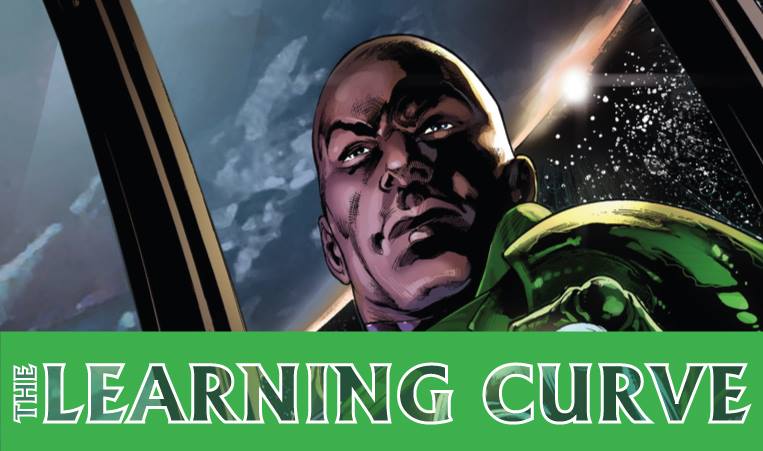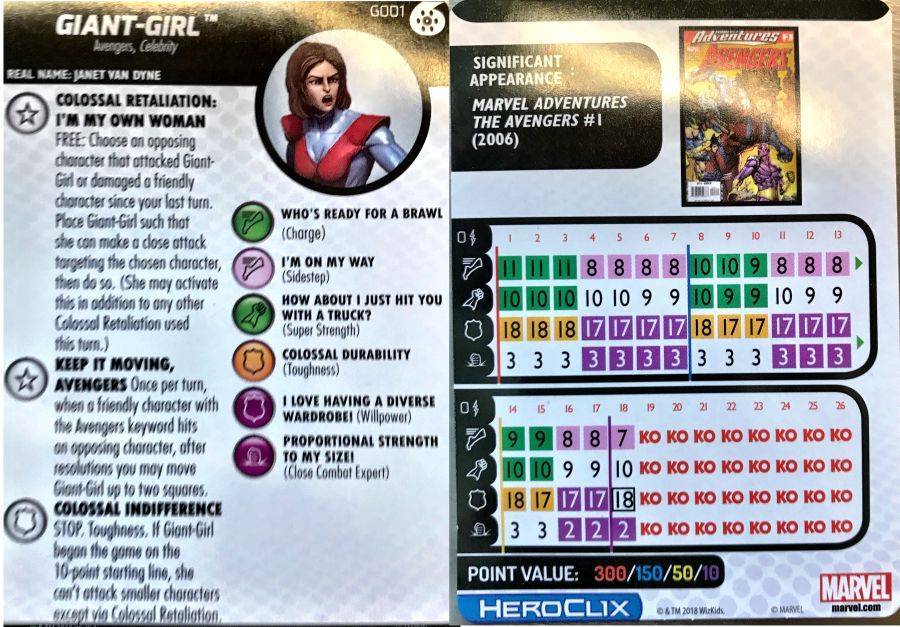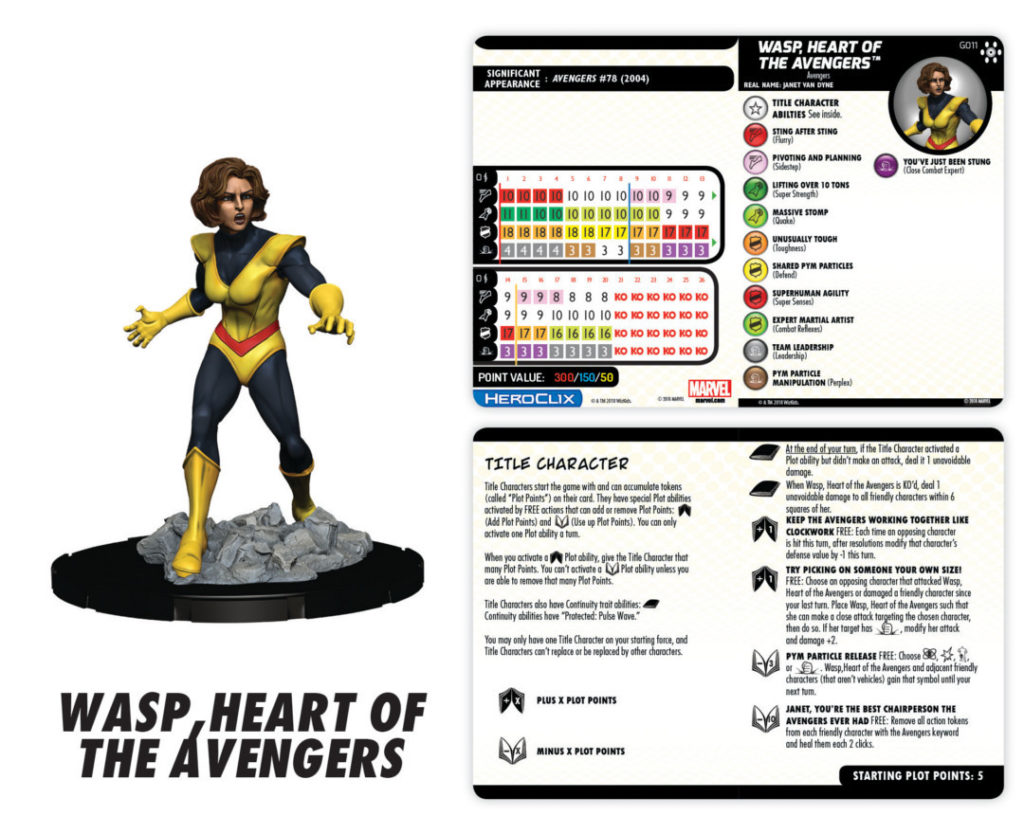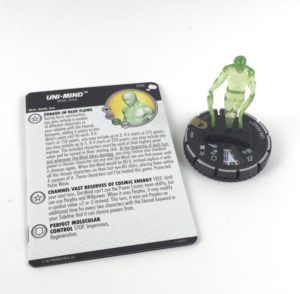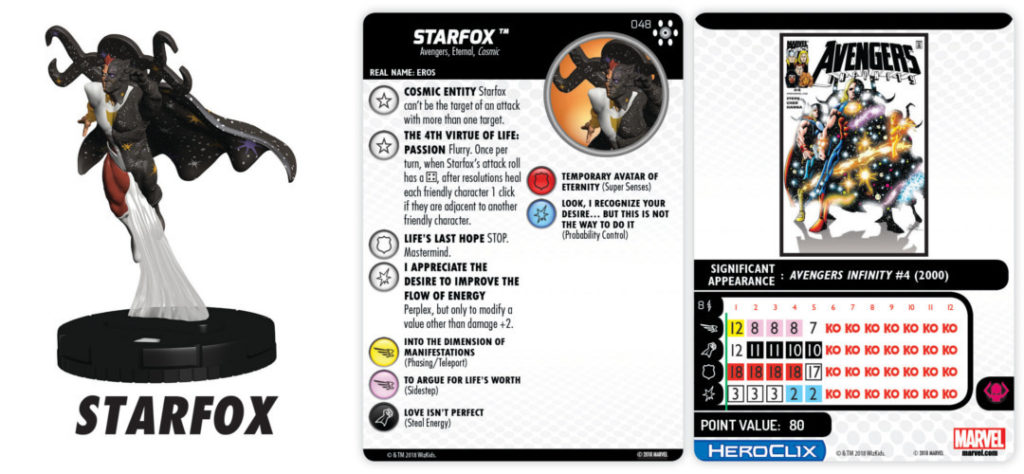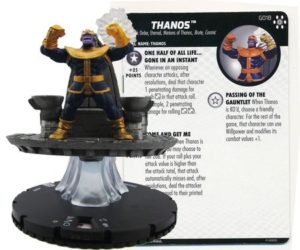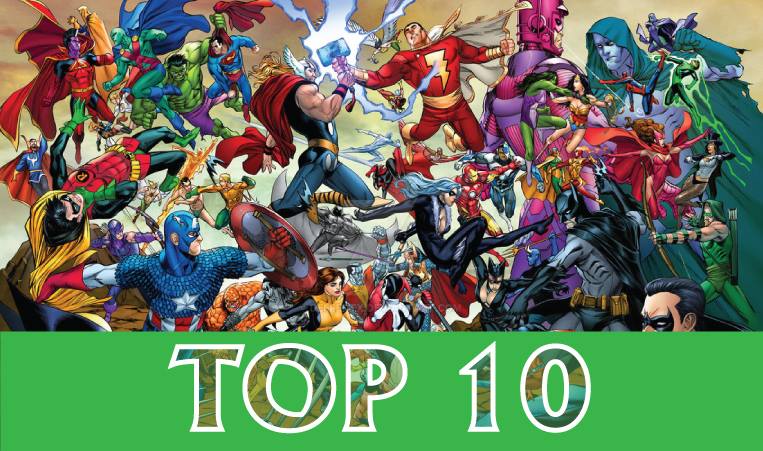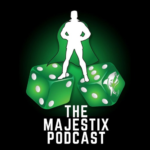 by Adam Friedman
by Adam Friedman
Avengers Infinity is now out and legal, but it isn’t clear what it means for the meta. Rotation itself is going to cause some big waves, but those were largely foreseeable for some time now. What is less obvious are the tricks and traps Avengers Infinity brings to play. In this article I intend to expose many of these. While some may be more obvious than others, any of these can be a surprising headache if it catches you off-guard because you weren’t aware of it.
Massive Retaliation
Everyone by now is fairly familiar with the Colossal Retaliation effect, once per turn you can get a free attack on an opposing figure that caused damage, and basically get to ignore the map to do so. However, Avengers Infinity changes this because it fundamentally increases the number of times this effect can be used in a turn due to a variety of new retaliation effects. Nearly every iteration of Retaliation before AI uses the following language “if no other Colossal Retaliation power has been activated this turn.” The one exception previously was Stilt-man, who simply lacks that limitation entirely. Even then, Stilt-man himself had the effect in the form of a Damage power.
The new Giant-Girl, however, retaliates in the form of a Trait, not a power. Thus after using her trait to retaliate it is still perfectly legal to get in with Carnage, Surtur, or whatever other traditional retaliator you please. This may not seem like much at first glance, but merely 10 points to threaten an extra 3 damage to any piece the opponent attacks with is actually a significant threat to most figures and heavily alters how an aggressive player needs to consider what pieces to target first.
On top of this, Wasp, Heart of the Avengers comes in with a trait that allows her to do the same thing retaliators do, but without the limitation (much like Stilt-Man), and also without using the name Colossal Retaliation (which matters for Giant-Girl, since she looks for that name, whether or not it is a power).
For 70 Points, this means the opponent can sit Wasp, Carnage, and Giant-Girl in their back row while mixing it up with their Goblin King, Shredders, or whatever other piece, and have a lurking 9-damage in the wings. Worse, since Wasp lacks Colossal Indifference, she can follow up with either an ID call-in, or a Close Combat Expert attack of her own. As if this wasn’t enough, the Fast Forces pack adds possibly the biggest game-changer of the lineup with another Giant-Girl.
The FF Giant Girl’s retaliation is a trait (so traditional retaliation doesn’t find it, just like the mainset Girl’s), and unlike the mainset Giant-Girl does it as FREE, instead of POWER. On top of this her trait explicitly allows her to use it in addition to any other retaliation effects. At 10 points this means you can sit 3-4 of them in your backline to threaten 8-damage that doesn’t count against your action total.
With Wasp added to the mix they get even deadlier, Wasp’s -3 allows you to change the size of the Girls. By making the 10 point Girls standard size they will be able to attack normally after retaliating, threatening 8 free damage followed by 3 (or 4 if you have Leadership) Close Combat Expert attacks, while only exposing 30-40 points of your force to the opponent. And that is in addition to any traditional retaliator such as Carnage, Sinestro, Ameridroid, whomever.
Fast Forces Giant-Girl at her higher lines can also join Wasp, and Carnage as retaliators who can pop in for a free attack and follow up with a retaliation. Even at 50 points, threatening 3 free damage followed by a perfectly placed Wolverine or Professor X can be devastating. Even worse if she is working alongside several lower cost Giant-Girls, since Professor X has Empower, and each of the 10 pt girls do normal damage (which means Empower can increase how much they deal). Assuming you played any other two random Empower pieces and got them in position an opponent’s attack could mean you clock them with a series of 5 damage free attacks with your ten point girls, and still have enough Costed actions to call in something nasty as well with your more expensive Giant Girl.
The set also has its own solid ‘traditional’ retaliation effects like Groot (who has the cheapest starting Leadership since Infinity Challenge’s LEs, in addition to making some nasty pogs. Speaking of which, we should probably talk about Groot himself, as he is strong enough to see lots of play and has some un-intuitive interactions.
I am Groot:
Most of what Groot does is pretty straightforward, but there’s some neat interactions surrounding his bystander trait.
PUNY MORTALS, WE WILL CRUSH YOU LIKE AN INSECT: At the beginning of the game, you may generate a Dr. Leslie Evans bystander in an opponent’s starting area that’s friendly to their force. If you do, generate two Walking Wood bystanders. // Whenever Groot hits one or more characters with an attack, after resolutions generate a Walking Wood bystander (maximum 5 on the map).
First and foremost, it is worth noting that his beginning of the game trait is optional. At the beginning of the game triggers occur after forces are placed, just before the first player begins their first turn. This means you get to wait until that time to decide whether or not it is advantageous to give the opponent Leslie in order to get yourself some Walking Wood.
Added to this is the fact that the Groot player gets to place the bystander. Often this can allow you to disrupt an un-savvy player’s position. If the opponent has lines of fire they want/need to draw early on and is sloppy with their positioning, it is entirely possible for you to plop Leslie down between their characters in order to force them to waste an action moving Leslie before they get to do this, for a bonus trait on an already good retaliator this is extremely useful.
Additionally, since generating bystanders by default has you place them adjacent to the character creating them, this means you can actually start your walking woods further out than the rest of your force, since you can place Groot as far forward as possible, then place the Woods one square further out (but adjacent to Groot). This is a small advantage, but one that might not be totally obvious at first glance.
On the downside, players going up against Groot should beware the timing and placement restriction. Because Groot’s effect only lets you place Walking Woods if you place Leslie, if the opponent can prevent Leslie from being placed, Groot will not have the option of starting the game with a pair of Woods. The easiest (possibly only) way to do this is to simply not have any starting area left for Leslie to be placed. During setup, if the opponent fills up all the squares of the printed starting area, Leslie will simply not be able to be placed. This is true even if starting areas are expanded for initial placement, because the same rule that allows expansion explicitly states “Effects that refer to a starting area only count the original starting area inside the purple boundary lines.” (See Comp Supp Page 2). On a map like Genosha, any random opponent with 4 or more retaliators (not including Stilt-man) will simply be able to deny you access to those initial Woods.
There are some aspects to the second half of the trait worth noting also. Since the trait only cares about whether Groot hits, and not whether he hit with his retaliation this means after retaliating Groot can potentially make another Walking Wood if he has a target to punch with a costed action (such as an opposing colossal). He also works differently than Carnage. People familiar with Carnage might be aware that if his attack KO’s the target, no Symbiote will be generated (because there is no opposing character to place it adjacent to). However Groot just generates normally, which means you place the Walking Wood next to Groot himself. In addition to being more flexible in allowing those crazy trees to attack things Groot didn’t retaliate, it also means he’ll get to spread his roots even if his retaliation (or other attack) proves lethal to the target.
Uni-Mind Endgames:
While not part of the new set, TMT’s Uni-Mind gets some new interactions that it’s important you’re aware of.First, access to Starfox lets Uni-Mind pick Flurry. This opens up a variety of options with equipment like Mjolnir. Realistically this one is fairly straightforward and there isn’t much to say other than to note it can happen. Similarly Thanos can be used in order to provide Uni-Mind access to Sidestep. In and of itself noteworthy as a good power option, but not the most exciting thing otherwise. What will catch you offguard is what happens when you KO a Thanos brought in after popping a Uni-Mind. Generally speaking popping KO-ing a Uni-Mind is a fairly straightforward affair, make sure to nab each Eternal for 1 damage, then do your happy dance for eliminating the threat. Except with Thanos things are never quite that simple.
Thanos has this irritating trait.
PASSING OF THE GAUNTLET: When Thanos is KO’d, choose a friendly character. For the rest of the game, that character can use Willpower and modifies its combat values +1.
This will mean whatever secondary piece Uni-Mind brought with him can suddenly become a severe headache with a dramatic increase in threat-rating.
Didn’t finish off Lockjaw before popping Uni and Thanos? He now defaults to +1 all stats, gets Willpower to deny incap KO’s off click 6, and can get an additional set of +1s if he rolls onto the power he picks. Guaranteed 11/3 HSS with 8 range that is hard to KO is nasty enough, a 1/6 chance he is on 12/4, or significant odds he gets Outwit, or Prob Control to go along with it just makes things even more painful.
And it isn’t like you really have the option to ignore Thanos, either. Printed Pulse Wave and Prob Control represents a fairly significant threat. And since Willpower is optional, if the opponent really wants to they can always just push Thanos to death making an attack in order to hand-off pluses onto his team-mate. Yes it scores them a lot of points, but if it allows the entire opposing force to be defeated in exchange, it’s a pretty worthwhile trade-off.
A Quick note on Protected Pulsewave and Mastermind:
Avengers Infinity gives us a whole slew of chases that share the same Defense special. LIFE’S LAST HOPE: STOP. Mastermind.
This effect is very powerful since it is a Mastermind that can’t be countered, and that Pulse Wave doesn’t prevent the usage of. Except that Pulsewave actually can prevent the Mastermind, but not because Pulse Wave says it can’t be used. Mastermind requires the character you want to take the hurt to not already be a hit target of the attack. One of the features of Pulse Wave is that it can target multiple characters. This means that if the opponent multi-target Pulse Waves your AI chase along with all the adjacent pieces, your chase simply won’t be able to offload the attack (assuming the roll is high enough) because all the pieces adjacent are already targets.
In Conclusion:
While none of these tactics or interactions necessarily breaks the meta open (though Fast Forces Giant Girl still might out of sheer power level), you should expect to come up in the new Modern format with some significant regularity. Not being aware of how any one of these interactions works could cost you wins you would’ve been able to push through had you planned for them in advance. I hope that this keeps you from being flatfooted by some of the less immediately obvious effects Avengers Infinity brings to the format.
